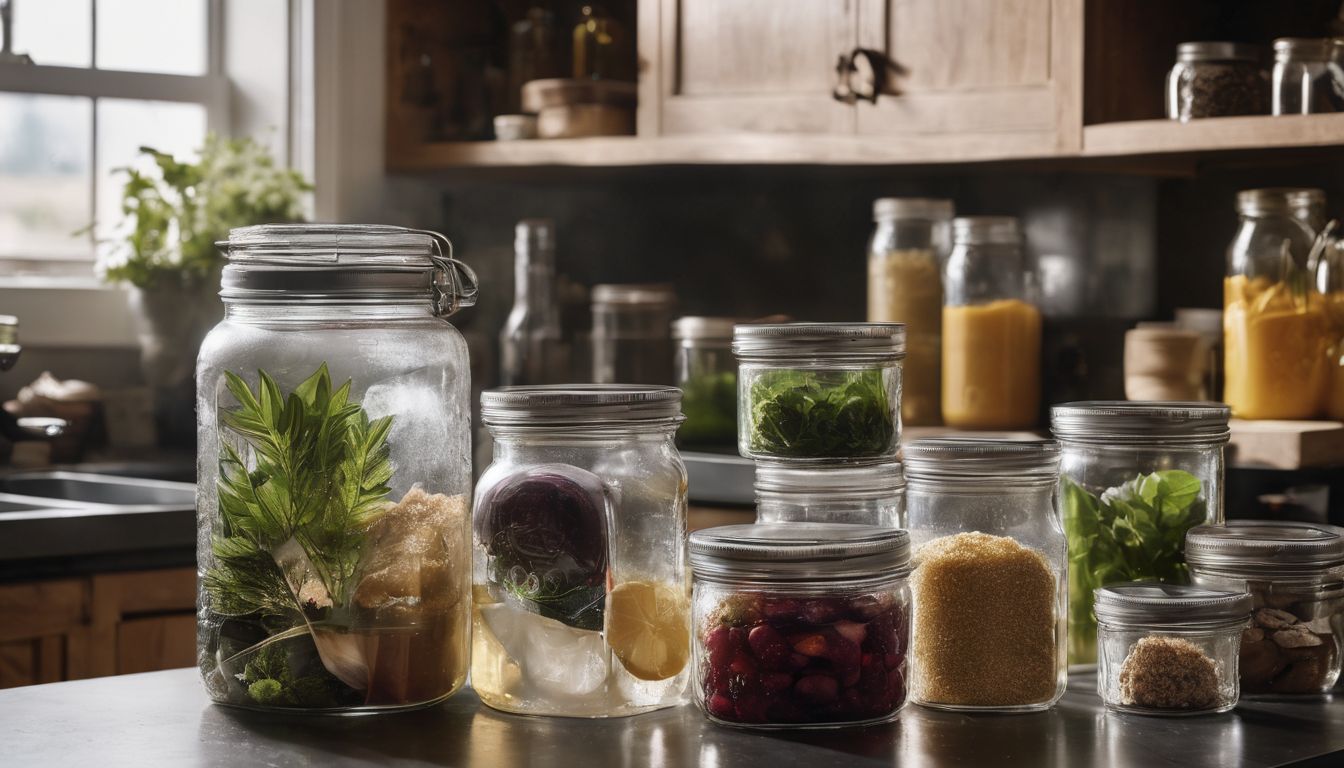Drafty rooms and chilling winds sneaking through old windows can leave you shivering and your bills soaring. Surprisingly, energy-efficient windows can slash heating costs by up to 15%.
In this post, we’ll explore innovative window options that keep your home cosy and your wallet happy. Discover the change a pane can make!
Key Takeaways
- Energy-efficient windows can cut heating bills by up to 15%, offering a cosy home and savings on energy costs. Low-E coatings and double-glazed glass with gas fills are some of the innovations that help achieve these improvements.
- Upgrading to energy-efficient windows not only improves home comfort but also increases property value, particularly for eco-conscious buyers who value sustainable features.
- Window frames made from materials like wood, fibreglass, or vinyl combined with advanced glazing technologies enhance thermal performance and contribute to reduced carbon footprints.
- When selecting windows, factor in your home’s orientation, climate, U – factor ratings, and solar heat gain coefficients alongside Energy Star certification to ensure you choose the most efficient option.
- Government programmes may offer grants or rebates for window upgrades, making it easier for homeowners to invest in energy-efficient options that align with their commitment to sustainability.
Benefits of Investing in Energy-Efficient Windows
Investing in energy-efficient windows can help reduce energy consumption and costs, improve insulation and comfort, and increase the value of your home. These benefits make them a smart choice for environmentally conscious individuals looking to upgrade their windows.
Reduce energy consumption and costs
Switching to energy-efficient windows slashes your heating and cooling expenses by creating a sturdy barrier against outdoor temperatures. These windows are crafted with advanced technologies that lock in the desired climate inside your home, meaning less work for your HVAC system and more money stays in your pocket.
Low-emissivity (Low-E) coatings on glass reflect infrared light, keeping heat inside during winter and outside during summer, boosting savings significantly.
Opting for double-glazing or insulated glass units also contributes substantially to cutting energy bills. They trap a layer of air or gas between two panes of glass, reducing thermal transfer and giving you tight control over your indoor environment regardless of what the weather does outside.
By upgrading outdated windows with high-performance alternatives, not only do you enjoy a more comfortable living space year-round but also contribute to reduced fossil fuel usage – an environmentally friendly move towards sustainability.
Improve insulation and comfort
To improve insulation and comfort, consider upgrading to energy-efficient windows. These windows are designed with advanced glazing technologies that reduce heat transfer, keeping your home warmer in winter and cooler in summer.
The use of low-emissivity coatings helps to minimise heat loss through the glass while allowing natural light to enter. Additionally, insulated frames and sashes prevent drafts and enhance overall thermal performance, creating a more comfortable living environment.
By choosing energy-efficient windows, you can effectively reduce energy consumption while enjoying optimal indoor comfort. Upgrading to these sustainable window options can make a significant impact on your home’s thermal performance, ensuring a more environmentally friendly and cost-effective solution for your household.
Increase home value
Energy-efficient windows can increase the value of your home significantly. By installing energy-efficient windows, you demonstrate to potential buyers that your property is equipped with sustainable features and has lower long-term operating costs.
These eco-conscious improvements contribute to a higher resale value while also attracting environmentally conscious individuals looking for green window choices.
As we delve into choosing the right windows for your home, it’s essential to consider how they impact sustainability and overall energy efficiency. Let’s explore factors that influence your decision when selecting energy-efficient windows – from frames and sashes to glazing or glass options.
Types of Energy-Efficient Windows
When it comes to energy-efficient windows, there are different types to consider. This includes frames and sash, glazing or glass, and operating types. Each of these components plays a role in the overall energy efficiency of the window.
Frames and sash
Window frames and sashes play a crucial role in the energy efficiency of windows. Selecting frames made from sustainable materials such as wood, fibreglass, or vinyl can contribute to reducing heat transfer and improving thermal performance.
When combined with double-glazing and low-emissivity glass, these frames enhance insulation and help conserve energy. Additionally, choosing well-designed sashes that fit snugly within the frame minimises air leakage, providing a more comfortable indoor environment while lowering heating and cooling costs.
Understanding the impact of window frames and sashes on energy efficiency is essential when making environmentally conscious decisions for your home. By carefully considering these components along with glazing options, homeowners can significantly improve their window’s environmental performance and reduce their carbon footprint.
Glazing or glass
When choosing energy-efficient windows, consider the glazing or glass to maximise insulation. Double-glazed windows are a popular choice as they consist of two panes of glass with a layer of gas sealed in between, providing enhanced thermal performance.
Low-emissivity (Low-E) coatings can be applied to the glass to control heat transfer and reduce solar heat gain, improving energy efficiency. Spectrally selective coatings are also beneficial as they allow light to enter while blocking heat-producing ultraviolet and infrared rays.
For environmentally conscious individuals seeking sustainable window options, there are various choices for energy-efficient glazing or glass. Insulated glass windows with advanced technologies like low-E coatings and spectrally selective coatings offer superior thermal performance, promoting energy savings and reducing environmental impact.
Operating types
Energy-efficient windows come in various operating types, including casement, awning, sliding, and double-hung. Casement windows are hinged on one side and open outward with a crank mechanism.
Awning windows are also hinged but open upward to allow for ventilation even during light rain. Sliding windows feature sashes that glide horizontally for easy operation and cleaning.
Double-hung windows have two movable sashes allowing for top-down or bottom-up opening, enhancing airflow control.
Innovative Technologies for Energy Efficiency
Low-E glass coatings, gas fills and spacers, and spectrally selective coatings are just a few of the innovative technologies that can make your windows more energy-efficient. Read on to discover how these advancements can help you save on energy costs and reduce your environmental impact.
Low-E glass coatings
Low-E glass coatings are a key feature in energy-efficient windows. They work by reflecting heat back into the room during cold months and preventing unwanted heat from entering during summer, saving on heating and cooling costs.
These coatings also help reduce UV radiation that can fade furniture and carpets, making them an environmentally friendly choice for sustainable homes.
Using Low-E glass coatings can significantly improve the thermal performance of windows, ensuring that homes stay comfortable year-round while reducing energy consumption. These innovative technologies contribute to creating a greener living environment, aligning with eco-conscious values and supporting environmental conservation efforts.
Gas fills and spacers
Gas fills, such as argon or krypton, enhance the thermal performance of energy-efficient windows by reducing heat transfer. These inert gases are inserted between glazing layers to improve insulation and reduce heat loss.
Spacers, which separate and seal the glazing layers, play a crucial role in maintaining the gas fill’s integrity and preventing condensation buildup. Energy-conscious homeowners benefit from these innovative technologies that contribute to lower energy costs and improved comfort.
For environmentally conscious individuals seeking sustainable window options with enhanced thermal performance, choosing gas-filled windows with effective spacers can significantly impact their home’s energy efficiency.
Spectrally selective coatings
Spectrally selective coatings are advanced technologies that allow windows to selectively filter the wavelengths of light passing through them. These coatings enable windows to block certain wavelengths of light while allowing other wavelengths to pass through, resulting in increased energy efficiency and improved thermal performance.
By reducing the amount of infrared radiation allowed into a building, spectrally selective coatings help maintain a cooler indoor environment during hot weather while still allowing visible light transmission.
These innovative coatings also prevent UV rays from entering the building, which helps protect interior furnishings and decor from fading. With spectrally selective coatings, homeowners can enjoy natural daylight without compromising on energy savings or comfort, making them an excellent choice for environmentally conscious individuals looking to enhance their living spaces sustainably.
Choosing the Right Windows for Your Home
When choosing energy-efficient windows for your home, consider factors such as climate, orientation, and the size of the window. Window selection tips can help you make an informed decision that suits your specific needs and preferences.
Window selection tips
Factors to consider
Before investing in energy-efficient windows, consider the orientation of your home and the climate you live in. Assess the level of insulation needed to reduce heat loss or gain. Think about the window’s U-value and solar heat gain coefficient to ensure they meet your specific climate needs.
Also, factor in your budget and any available rebates or incentives that could offset initial costs.
Evaluate additional features such as noise reduction, security, and UV protection to fully maximise the benefits of energy-efficient windows for your home. Lastly, consider the maintenance requirements for different window types and materials before making a final decision on upgrading.
When choosing environmentally friendly windows for your home, it’s vital to weigh all factors carefully to make an informed decision that aligns with both your sustainability goals and practical needs.
Resources for Energy-Efficient Window Options
When it comes to finding energy-efficient window options, there are several resources available to help you make the best choice for your home. From window selection tools to Energy Star ratings and government programmes and grants, you have plenty of options to explore.
Window Selection Tool
Use the window selection tool to find the best energy-efficient windows for your home. Compare different options based on factors like insulation, glazing, and operating types to make an informed decision that fits your eco-conscious lifestyle.
This user-friendly resource simplifies the process of selecting sustainable windows by providing key information and helping you narrow down choices that align with your energy-saving goals.
Discover environmentally friendly windows with ease using the window selection tool, allowing you to effortlessly contribute to energy conservation while enjoying improved thermal performance in your living spaces.
Energy Star ratings
Window buyers worried about energy efficiency should pay attention to Energy Star ratings. These labels are assigned to windows that meet specific energy performance criteria. By selecting windows with an Energy Star rating, you can ensure that your choice is environmentally friendly and will contribute to significant cost savings on your energy bills.
When looking for new windows, be sure to check for the familiar blue label of Energy Star certification. This simple gesture can make a big difference in reducing your carbon footprint while also adding value and comfort to your home.
Next Heading: “Government programmes and grants”
Government programmes and grants
To assist environmentally conscious individuals in making energy-efficient window upgrades, various government programmes and grants are available for homeowners. These initiatives aim to promote the use of eco-friendly windows by providing financial incentives, rebates, and tax credits for installing energy-efficient glass or high-performance window technologies.
By taking advantage of these resources, individuals can lower their environmental impact while also reducing their energy costs and improving the overall thermal performance of their homes.
Additionally, these programmes enable homeowners to contribute to conservation efforts and support sustainable living practices within their communities.
Conclusion
In conclusion, energy-efficient windows offer numerous benefits for your home. They can lower energy consumption and costs, while also improving insulation and comfort. With a range of innovative technologies available, choosing the right windows for your home has never been easier.
Consider exploring resources such as window selection tools and Energy Star ratings to make an informed decision that aligns with your eco-friendly values.
FAQs
1. What are energy-efficient windows?
Energy-efficient windows are high-performance windows designed with eco-friendly materials to enhance thermal performance and save energy in homes and buildings.
2. How do innovations in window technology contribute to energy saving?
Innovative technologies like double-glazing and low-emissivity glass increase a window’s energy performance, helping you save on heating and cooling costs while being kinder to the environment.
3. Can replacing my old windows really help me save energy?
Yes! Through an eco-conscious window replacement programme, fitting new energy-saving windows can significantly reduce your home’s energy use and lower your bills.
4. Are there different options for eco-friendly windows?
Absolutely! There is a variety of energy-saving window options available, including those that feature advanced thermal performance or have environmentally friendly designs to suit different preferences.
5. Why should I consider choosing energy-efficient glass for my home?
Choosing an eco-friendly window with special glass like low-emissivity or double-glazing ensures better insulation, resulting in less heat loss during winter months and keeping your home cool during summer.





